Opinion & Analysis
Wishon: What swing weight should your clubs be?
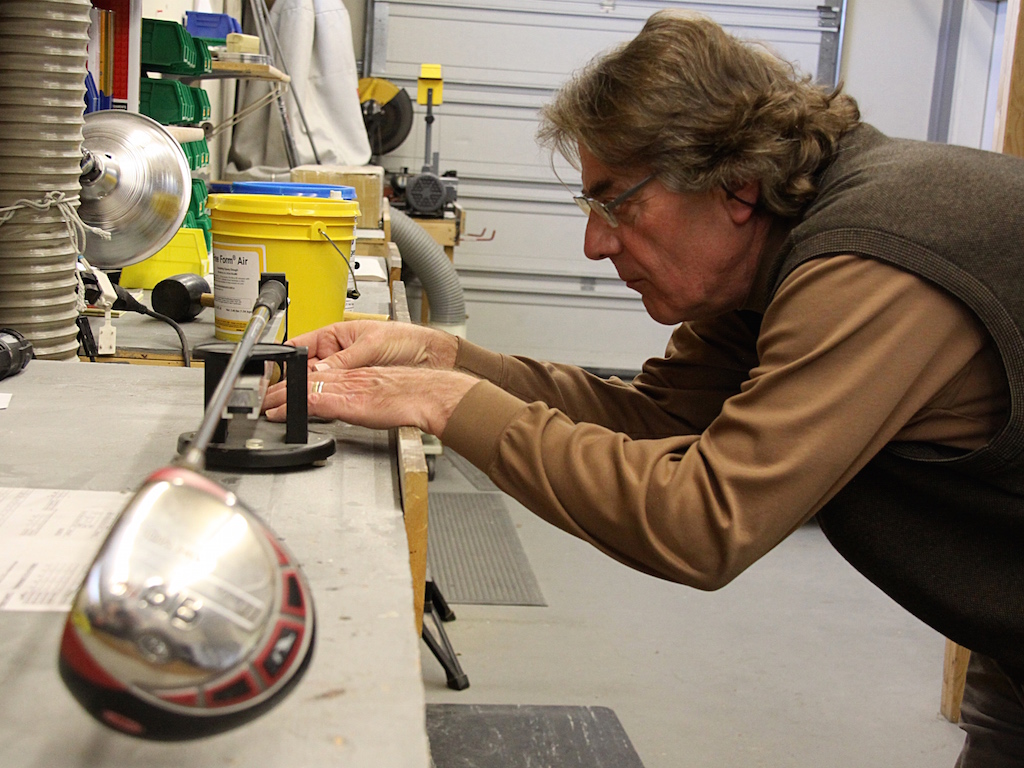
In a previous article, I discussed the fitting of the shaft weight and mentioned that a discussion about the weight of a golf club should not only include shaft weight, but swing weight as well.
The reason? These two elements are so interrelated, and so important when it comes to helping golfers find clubs that will give them their best tempo, timing, rhythm and of course, their best shots.
Before I dig in any further, let’s clarify two things:
- Shaft weight is by far the biggest contributor to the total weight of the club, which is simply a measurement of how heavy a club is.
- Swing weight is the measurement of the head-weight feel of a club. A club with a heavier swing weight will feel heavier to a golfer than one with a lighter swing weight, because its balance point is closer to the club head.
As with the fitting of the shaft weight, the club fitter also has to evaluate the golfer’s transition force, tempo, strength and any pre-determined feel preference the golfer may have when making the decision of what the swing weight of the clubs needs to be.
Both elements — shaft weight and swing weight — are influenced by the same golfer swing characteristics, which is why good club fitters will fit for both the shaft weight and the swing weight at the same time in the fitting process.
In the actual fitting process, however, the shaft weight comes first. This is because the test clubs required to focus on the fitting of shaft weight and swing weight together have to first be assembled with a shaft that the club fitter deems suitable from his analysis.
Shaft flex and bend-profile design is also important, and I’ll cover that in my next article. It’s why good club fitters think about weight and flex/bend profile simultaneously in the fitting process — they have to in order to come up with candidate shafts to use in the test club hitting sessions.
Once the club fitter determines a shaft with suitable weight and the best flex/bend profile characteristics for the golfer’s swing characteristics, the matter of fitting for the swing weight is done by having the golfer hit shots with a test club while adding lead tape to the club head. Shot shape, on-center hit results, and certainly the feedback from the golfer are then assessed.
Usually, it goes like this. As the golfer hits shots with the test clubs, the fitter adds lead tape to the clubs heads — about two swing weight points at a time — while observing the ball flight and on-center hit performance.
The fitter is also asking the golfer questions such as:
- How does your swing tempo/timing feel?
- Do you sense that you are fighting any tendency to be too quick with your tempo?
- Do you sense that you have to make more of an effort to swing the club?
- Do you feel the presence of the club head during the swing enough?
- Do you feel that the head feels a little too light, too heavy, about right?
The club fitter has to find that point at which the golfer begins to sense either a little better feel or begin to feel that his swing tempo and timing is better for the weight feel of the test clubs. That really is the key of a successful total weight/swing weight fitting — when the golfer does not have to consciously think about his swing tempo and timing.
It just happens.
And because the swing weight fitting process has to also include the flex/bend profile and weight of the shaft, the fitter knows that he will be switching between the different shafts he has evaluated as suitable for the golfer while he is also performing the “add a little weight at a time to the club head” evaluation to determine the best head weight feel for the golfer.
This is a perfect example of how experienced club fitters will “multi-task” to evaluate separate, but related specs in the fitting process, all at the same time. It’s why good club fitters are good and others are not when it comes to simultaneously evaluating each of these separate but very much related fitting elements.
The goal in the swing weight fitting is to get the golfer to a point where he reports that the club head is starting to feel a little bit too heavy, or the club is starting to require a little more effort to swing than the golfer would prefer. At that point, the club fitter removes a little of the head weight. Then a few more shots are hit to determine if the golfer still senses the head weight feel to be too much, or just right.
It is possible that the golfer never indicates a distinct, positive feel preference for the weight feel of the test club even when the head weight is brought back from a point of feeling too heavy for the golfer. When this happens, the good club fitters know that they need to test the golfer with a different weight shaft and go through the head weight fitting process all over again.
In my previous story, I offered some basic shaft weight fitting guidelines:
- Strong golfers/aggressive transitions/faster tempos = heavier shaft weights
- Weaker golfers/smooth transitions/smooth tempos = lighter shaft weights
These are guidelines that work for most golfers, but are not 100 percent set in stone for all golfers.
It is not uncommon for strong/aggressive transition/faster tempo golfers to end up being better fit into lighter shafts, but with a higher swing weight. While it certainly is less common for weaker/smooth transition/smooth tempo golfers to do better with a heavier shaft, it is not impossible.
This is why a very experienced club fitter can be worth his weight in gold. With experience come more situations in which the fitter encounters golfers who deviate from the guidelines.
Good clubfitters also realize that the interaction of shaft weight and swing weight is such that it is always possible to find strong/aggressive transition/faster tempo golfers who achieve their best tempo consistency with a lighter shaft, but with a higher swing weight to prevent the light shaft from making the clubs feel too light in some manner.
After all, there are a lot of tour players who play well with 60-to-65-gram shafts in their drivers and fairway woods. And a heavier head weight feel is how this can happen, even though logic may say that the player is too strong and forceful to be fit into such a lightweight shaft.
Sidebar: MOI Matching as an Alternative to Swing Weight Matched Clubs
Matching all clubs in a set to their MOI has become a viable alternative to swing weight matching for many golfers. MOI matching may also be thought of roughly as building the clubs in a set to progressively increase swing weights from long to short irons in the set.
Candidates for MOI matching over swing weight matching can be golfers who:
- Go in and out of consistency issues with the irons
- Suffer from occasional-to-frequent bouts of pulling short iron shots offline
- Sense less comfort and consistency with the short irons vs other irons in the set
For more information on MOI matching, visit: http://wishongolf.com/clubmakers/matching-golf-clubs-by-moi/
Sidebar: Don’t Get Trapped by a Specific Swing Weight
Remember, swing weight is NOT an actual measurement of weight as are grams, ounces or pounds. Swing weight is an arbitrary measurement of the relationship of weight in a golf club about the 14-inch fulcrum point on a swing weight scale.
When fitting swing weight, good club fitters really know that they are instead fitting for the head weight feel of the golf club. They are trying to find what head weight feel is going to bring about the best swing tempo and shot consistency for the golfer based on the length, shaft weight and grip weight of the clubs. Once that best head weight feel is found for the golfer, then the club fitter can perform a swing weight measurement to have as a guideline for the other clubs in the set, or as a baseline for taking the golfer into an MOI matched set.
In short, the head weight feel of D2 in a club that is 45 inches with a 60-gram shaft and a 50-gram grip is not going to be the same head weight feel as D2 in a club that is 43.5 inches with an 80-gram shaft and 40-gram grip. Thus, golfers should not get locked into a particular swing weight when changing length, shaft weight, or grip weight but rather go through a new investigation into what head weight will bring about the best tempo and timing in the swing.
Good club fitters know this, so once they choose the best length, shaft weight and grip preferred by the golfer, they fit for the best head weight feel and do not get locked into a specific swing weight.
Related
- What length should your clubs be?
- What lofts should your clubs be?
- Face angle is crucial for a proper fitting
- The best way to fit lie angle
- How to choose the right club head design
- Tom Wishon’s keys to set makeup
- Getting the right size grip, time after time
- What shaft weight should you play?
- What swing weight should your clubs be?
- What shaft flex should I use?
This story is part of a 10-part series from Tom Wishon on professional club fitting.
- LIKE465
- LEGIT59
- WOW21
- LOL13
- IDHT6
- FLOP8
- OB4
- SHANK26
Opinion & Analysis
Myrtle Beach, Explored: February in South Carolina

As I gain in experience and age, and familiarity breeds neither contempt nor disdain, I understand why people return to a place. A destination like Myrtle Beach offers a sizable supply and diversity of restaurants, entertainment venues, and shops that are predicated on the tenets of the service industry. Greet your customers with a smile and a kind word, and they will find comfort and assurance. Provide them with a memorable experience and they will suggest your place of business to others.
My first tour of Myrtle Beach took place in the mid-1980s, and consisted of one course: Gator Hole. I don’t remember much from that day, and since Gator Hole closed a decade later, I cannot revisit it to recollect what I’d lost. Since then, I’ve come to the Grand Strand a few times, and been fortunate to never place a course more than once. I’ve seen the Strantz courses to the south and dipped my toe in the North Carolina courses of Calabash. I’ve been to many in the middle, including Dunes, Pine Lakes, Grande Dunes among them.
2024 brought a quartet of new courses, including two at the Barefoot Resort. I’d heard about the North Myrtle Beach four-pack of courses that highlight the Barefoot property, including layouts from Pete Dye, Tom Fazio, Davis Love III, and Greg Norman. I had the opportunity to play and shoot the Dye and Fazio tracks, which means that I’ll have to return to see the other two. Sandwiched between them were the TPC-Myrtle Beach course, also from Tom Fazio, and the Pawley’s Plantation trace, by the hand of Jack Nicklaus. I anticipated a bit of the heroic, and bit of the strategic, and plenty of eye candy. None of those architects would ever be considered a minimalist, so there would be plenty of in-play and out-of-play bunkers and mounds to tantalize the senses.
My nephew arrived a few days early, to screen a few more courses. As a result, you the reader will have an extra quarter of mini-reviews, bringing the total of courses in this piece to eight. It was inconceivable that CJR would play four courses that I had never played nor photographed, but that was the case. His words appear at the end of this piece. We hope that you enjoy the tour.
Main Feature: Two Barefoots, a TPC, and Pawley’s Plantation
What Paul “Pete” Dye brought back from his trips to the United Kingdom, hearkened back to what C.B. MacDonal did, some 65 years prior. There is a way of finding bunkers and fairways, and even green sites, that does not require major industrial work. The Dye course at Barefoot Resorts takes you on a journey over the rumpled terrain of distant places. If there’s one element missing, it’s the creased and turbulent fairways, so often found in England and Ireland. The one tenet of playing a Dye course, is to always aim away from temptation, from where your eyes draw you. Find the safe side of the target, and you’ll probably find your ball. It then stands that you will have a shot for your next attempt. Cut the corner, and you might have need to reload. The Barefoot course begins gently, in terms of distance, but challenges with visual deception. After two brief 4s and a 3, the real work begins. The course is exposed enough, to allow the coastal winds to dance along the fairways. Be ready to keep the ball low and take an extra club or two.
If memory serves, TPCMB is my first trek around a TPC-branded course. It had all the trappings of a tour course, from the welcome, through the clubhouse, to the practice facilities and, of course, the course. TPC-Myrtle Beach is a Tom Fazio design, and if you never visit Augusta National, you’ll now have an idea of what it is like. You play Augusta’s 16th hole twice at TPCMB, and you enjoy it both times. Fazio really likes the pond-left, green-angle-around par three hole, and his two iterations of it are memorable.
You’ll also see those Augusta bunkers, the ones with the manicured edges that drop into a modestly-circular form. What distinguishes these sand pits is the manner in which they rise from the surrounding ground. They are unique in that they don’t resemble the geometric bunkering of a Seth Raynor, nor the organic pits found in origin courses. They are built, make no mistake, and recovery from them is manageable for all levels of bunker wizardry.
If you have the opportunity to play the two Tom Fazio courses back to back, you’ll notice a marked difference in styling. Let me digress for a moment, then circle back with an explanation. It was written that the NLE World Woods course designed by Fazio, Pine Barrens, was an homage to Pine Valley, the legendary, New Jersey club where Fazio is both a member and the architect on retainer. The Pine Barrens course was plowed under in 2022, so the homage no longer exists. At least, I didn’t think that it existed, until I played his Barefoot Resort course in North Myrtle Beach.
Pine Valley might be described as an aesthetic of scrub and sand. There are mighty, forced carries to travers, along with sempiternal, sandy lairs to avoid. Barefoot Fazio is quite similar. If you’re not faced with a forced carry, you’ll certainly contend with a fairway border or greenside necklace of sand. When you reach the 13th tee, you’ll face a drive into a fairway, and you might see a distant green, with a notable absence: flagstick. The 13th is the icing on the homage cake, a callout of the 8th hole at Pine Valley. Numero Ocho at the OG has two greens, side by side, and they change the manner in which the hole plays (so they say.) At Barefoot Fazio, the right-side green is a traditional approach, with an unimpeded run of fairway to putting surface. The left-side green (the one that I was fortunate to play) demands a pitch shot over a wasteland. It’s a fitting tribute for the rest of us to play.
Be certain to parrot the starter, Leon’s, advice, and play up a deck of tees. Barefoot Fazio offers five par-three holes, so the fours and fives play that much longer. Remember, too, that you are on vacation. Why not treat yourself to some birdie looks?
The Jack Nicklaus course at Pawley’s Plantation emerged from a period of hibernation in 2024. The greens were torn up and their original contours were restored. Work was overseen by Troy Vincent, a member of the Nicklaus Architecture team. In addition, the putting corridors were reseeded with a hardier, dwarf bermuda that has experienced great success, all along the Grand Strand that is Myrtle Beach.
My visit allowed me to see the inward half first, and I understand why the resort wishes to conclude your day on those holes. The front nine of Pawley’s Plantation works its way through familiar, low country trees and wetlands. The back nine begins in similar fashion, then makes its way east, toward the marsh that separates mainland from Pawley’s Island. Recalling the powerful sun of that Wednesday morning, any round beginning on the second nine would face collateral damage from the warming star. Much better to hit holes 11 to close when the sun is higher in the sky.
The marshland holes (12 through 17) are spectacular in their raw, unprotected nature. The winds off the Atlantic are unrelenting and unforgiving, and the twin, par-three holes will remain in your memory banks for time’s march. In typical Golden Bear fashion, a majority of his putting targets are smallish in nature, reflecting his appreciation for accurate approach shots. Be sure to find the forgiving side of each green, and err to that portion. You’ll be grateful.
Bonus Coverage: Myrtlewood, Beechwood, Arrowhead, and King’s North
Arrowhead (Raymond Floyd and Tom Jackson)
A course built in the middle of a community, water threatens on most every hole. The Cypress 9 provides a few holes forcing a carried drive then challenge you with water surrounding the green. On Waterway, a drivable 2nd hole will tempt most, so make sure the group ahead has cleared the green.
Myrtlewood (Edmund Alt and Arthur Hills) and Beechwood (Gene Hamm)
A middle of the winter New Englander’s paradise. Wide open fairways, zero blind shots and light rough allow for shaking off the rust and plenty of forgiveness. A plethora of dog legs cause one to be cautious with every tee shot. Won’t break the bank nor the scorecard.
King’s North @ Myrtle Beach National (Arnold Palmer)
- LIKE2
- LEGIT0
- WOW0
- LOL0
- IDHT0
- FLOP1
- OB0
- SHANK1
19th Hole
Vincenzi’s 2024 Players Championship betting preview: Pete Dye specialists ready to pass tough TPC Sawgrass test

The PGA Tour heads to TPC Sawgrass to play in one of the most prestigious and important events of the season: THE PLAYERS Championship. Often referred to as the fifth major, the importance of a PLAYERS victory to the legacy of a golfer can’t be overlooked.
TPC Sawgrass is a par-72 measuring 7,245 yards and featuring Bermudagrass greens. Golfers must be patient in attacking this Pete Dye course.
With trouble lurking at every turn, the strokes can add up quickly. With a par-5 16th that is a true risk-reward hole and the famous par-3 17th island green, the only safe bet at TPC Sawgrass is a bet on an exciting finish.
THE PLAYERS Championship field is often referred to as the strongest field of the year — and with good reason. There are 144 in the field, including 43 of the world’s top 50 players in the OWGR. Tiger Woods will not be playing in the event.
THE PLAYERS is an exceptionally volatile event that has never seen a back-to-back winner.
Past Winners at TPC Sawgrass
- 2023: Scottie Scheffler (-17)
- 2022: Cameron Smith (-13)
- 2021: Justin Thomas (-14)
- 2019: Rory McIlroy (-16)
- 2018: Webb Simpson (-18)
- 2017: Si-Woo Kim (-10)
- 2016: Jason Day (-15)
- 2015: Rickie Fowler (-12)In this article and going forward, I’ll be using the Rabbit Hole by Betsperts Golf data engine to develop my custom model. If you want to build your own model or check out all of the detailed stats, you can sign up using promo code: MATTVIN for 25% off any subscription package (yearly is best value).
5 Key Stats for TPC Sawgrass
Let’s take a look at five metrics key for TPC Sawgrass to determine which golfers boast top marks in each category over their last 24 rounds.
1. Strokes Gained: Approach
Strokes Gained: Approach has historically been far and away the most important and predictive stat at THE PLAYERS Championship. With water everywhere, golfers can’t afford to be wild with their iron shots. Not only is it essential to avoid the water, but it will also be as important to go after pins and make birdies because scores can get relatively low.
Total SG: Approach Over Past 24 Rounds
- Tom Hoge (+1.37)
- Scottie Scheffler (+1.20)
- Tony Finau (+0.99)
- Jake Knapp (+0.83)
- Shane Lowry (+0.80)
2. Total Driving
This statistic is perfect for TPC Sawgrass. Historically, driving distance hasn’t been a major factor, but since the date switch to March, it’s a bit more significant. During this time of year, the ball won’t carry quite as far, and the runout is also shorter.
Driving accuracy is also crucial due to all of the trouble golfers can get into off of the tee. Therefore, players who are gaining on the field with Total Driving will put themselves in an ideal spot this week.
Total Driving Over Past 24 Rounds
- Rory McIlroy (22)
- Akshay Bhatia (25)
- Keith Mitchell (25)
- Adam Hadwin (34)
- Sam Burns (+39)
3. Strokes Gained: Total at Pete Dye Designs
TPC Sawgrass may be Pete Dye’s most famous design, and for good reason. The course features Dye’s typical shaved runoff areas and tricky green complexes. Pete Dye specialists love TPC Sawgrass and should have a major advantage this week.
SG: Total (Pete Dye) per round over past 36 rounds:
- Patrick Cantlay (+2.02)
- Scottie Scheffler (+1.90)
- Min Woo Lee (+1.77)
- Sungjae Im (+1.72)
- Brian Harman (+1.62)
4. Strokes Gained: Ball Striking
Prototypical ball-strikers have dominated TPC Sawgrass. With past winners like Sergio Garcia, Henrik Stenson, Webb Simpson, Rory McIlroy and Justin Thomas, it’s evident that golfers must be striking it pure to contend at THE PLAYERS.
SG: Ball Striking Over Past 24 Rounds
- Scottie Scheffler (+2.02)
- Tony Finau (+1.51)
- Tom Hoge (+1.48)
- Keith Mitchell (+1.38)
- Will Zalatoris (+1.18)
5. Par 5 Average
Par-5 average is extremely important at TPC Sawgrass. With all four of the Par-5s under 575 yards, and three of them under 540 yards, a good amount of the scoring needs to come from these holes collectively.
Par 5 Average Over Past 24 Rounds
- Scottie Schefler (+4.31)
- Erik Van Rooyen (+4.35)
- Doug Ghim (+4.34)
- Wyndham Clark (+4.34)
- Matt Fitzpatrick (+4.31)
6. Strokes Gained: Florida
We’ve used this statistic over the past few weeks, and I’d like to incorporate some players who do well in Florida into this week’s model as well.
Strokes Gained: Florida over past 30 rounds:
- Scottie Schefler (+2.43)
- Erik Van Rooyen (+1.78)
- Doug Ghim (+1.78)
- Wyndham Clark (+1.73)
- Matt Fitzpatrick (+1.69)
7. Strokes Gained: Total on Courses with High Water Danger
With water everywhere at TPC Sawgrass, the blow-up potential is high. It can’t hurt to factor in some players who’ve avoided the “eject” button most often in the past.
Strokes Gained: Total on Courses with High Water Danger over past 30 rounds:
- Scottie Schefler (+2.08)
- Rory McIlroy (+1.82)
- Tony Finau (+1.62)
- Patrick Cantlay (+1.51)
- Will Zalatoris (+1.49)
THE PLAYERS Championship Model Rankings
Below, I’ve compiled overall model rankings using a combination of the five key statistical categories previously discussed — SG: Approach (25%), Total Driving (20%), SG: Total Pete Dye (14%), SG: Ball-striking (15%) SG: Par 5 (8%), SG: Florida (10%) and SG: High Water (8%).
- Scottie Scheffler
- Shane Lowry
- Tony Finau
- Corey Conners
- Keith Mitchell
- Justin Thomas
- Will Zalatoris
- Xander Schauffele
- Cameron Young
- Doug Ghim
- Sam Burns
- Chris Kirk
- Collin Morikawa
- Si Woo Kim
- Wyndham Clark
2024 THE PLAYERS Championship Picks
(All odds at the time of writing)
Patrick Cantlay +2500 (DraftKings):
Patrick Cantlay is winless since the 2022 BMW Championship but is undoubtedly one of the most talented players on the PGA Tour. Since the win at Wilmington Country Club, the 31-year-old has twelve top-10 finishes on Tour and is starting to round into form for the 2024 season.
Cantlay has done well in the most recent “signature” events this season, finishing 4th at Riviera for the Genesis Invitational and 12th at Bay Hill for the Arnold Palmer Invitational. The former Tour Championship winner resides in Jupiter, Florida and has played some good golf in the state, including finishing in a tie for 4th at the 2023 Arnold Palmer Invitational. His history at TPC Sawgrass has been up and down, but his best career start at The PLAYERS came last year when he finished in a tie for 19th.
Cantlay absolutely loves Pete Dye designed courses and ranks 1st in the field in Strokes Gained: Total on Dye tracks in his past 36 rounds. In recent years, he’s been excellent at both the RBC Heritage and the Travelers Championship. TPC Sawgrass is a place where players will have to be dialed in with their irons and distance off the tee won’t be quite as important. In his past 24, rounds, Cantlay ranks in the field in Strokes Gained: Approach.
Despite being winless in recent years, I still believe Cantlay is capable of winning big tournaments. As one of the only United States players to bring their best game to Marco Simone for the Ryder Cup, I have conviction that the former top amateur in the world can deliver when stakes are high.
Will Zalatoris +3000 (FanDuel):
In order to win at TPC Sawgrass, players will need to be in total control of their golf ball. At the moment, Will Zalatoris is hitting it as well as almost anyone and finally has the putter cooperating with his new switch to the broomstick style.
Zalatoris is coming off back-to-back starts where he absolutely striped the ball. He finished 2nd at the Genesis Invitational and 4th at the Arnold Palmer Invitational where his statistics were eye opening. For the week at Bay Hill, Zal gained 5.0 strokes on approach and 5.44 strokes off the tee.
Throughout the early part of his career, Zalatoris has established himself by playing his best golf in the strongest fields with the most difficult conditions. A tough test will allow him to separate himself this week and breakthrough for a PLAYERS Championship victory.
Shane Lowry +4000 (DraftKings):
History has shown us that players need to be in good form to win the PLAYERS Championship and it’s hard to find anyone not named Scottie Scheffler who’s in better form that Shane Lowry at the moment. He finished T4 at the Cognizant Classic followed by a solo third place finish at the Arnold Palmer Invitational.
The fact that the Irishman contended at Bay Hill is a great sign considering he’s really struggled there throughout his career. He will now head to a different style of course in Florida where he’s had a good deal of success. He finished 8th at TPC Sawgrass in 2021 and 13th in 2022.
Lowry ranks 6th in the field in approach in his past 24 rounds, 7th in Strokes Gained: Total at Pete Dye designed courses in his last 30 rounds, 8th in par 5 scoring this season, and 4th in Strokes Gained: Total in Florida over his past 36 rounds.
Lowry is a player who’s capable of winning big events. He’s a major champion and won another premier event at Wentworth as well as a WGC at Firestone. He’s also a form player, when he wins it’s typically when he’s contended in recent starts. He’s been terrific thus far in Florida and he should get into contention once again this week.
Brian Harman +8000 (DraftKings):
(Note: Since writing this Harman’s odds have plummeted to 50-1. I would not advise betting the 50).
Brian Harman showed us last season that if the course isn’t extremely long, he has the accuracy both off the tee and with his irons to compete with anyone in the world. Last week at Bay Hill and was third in the field in Strokes Gained: Approach, gaining 5.54 strokes on the field in the category.
In addition to the strong iron play, Harman also gained strokes off the tee in three of four rounds. He’s also had success at Pete Dye tracks recently. He finished 2nd at last year’s Travelers Championship and 7th at the RBC Heritage.
It would be a magnificent feat for Harman to win both the Open Championship and PLAYERS in a short time frame, but the reality is the PGA Tour isn’t quite as strong as it once was. Harman is a player who shows up for the biggest events and his odds seem way too long for his recent track record.
Tony Finau +6500 (FanDuel):
A few weeks ago, at the Genesis Invitational, I bet Hideki Matsuyama because I believed it to be a “bet the number” play at 80-1. I feel similarly about Finau this week. While he’s not having the season many people expected of him, he is playing better than these odds would indicate.
This season, Tony has a tied for 6th place finish at Torrey Pines, a tied for 19th at Riviera and tied for 13th at the Mexico Open. He’s also hitting the ball extremely well. In the field in his past 24 rounds, he ranks 3rd in Strokes Gained: Approach, 3rd in Strokes Gained: Ball Striking, 6th in Par 5 average and 15th in Total Driving.
Finau’s problem has been with the putter, which has been undeniably horrific. However, this week he will see a putting surface similar to the POA at TPC Scottsdale and PGA West, which he’s had a great deal of success on. It’s worth taking a stab at this price to see if he can have a mediocre week with the flat stick.
Sungjae Im +9000 (FanDuel):
It’s been a lackluster eighteen months for Sungjae, who once appeared to be a certain star. While his ceiling is absolutely still there, it’s been a while since we’ve seen Im play the type of golf expected of a player with his talent.
Despite the obvious concerns, the South Korean showed glimpses of a return to form last week at the Arnold Palmer Invitational. He tied for 18th place and gained strokes off the tee, on approach, around the green and with the putter. When at his best, Im is a perfect course fit for TPC Sawgrass. He has remarkable precision off the tee, can get dialed in with his irons on shorter courses and can get up and down with the best players on Tour.
This number has gotten to the point where I feel comfortable taking a shot on it.
Billy Horschel +20000 (FanDuel):
Billy Horschel is a great fit on paper for TPC Sawgrass. He can get dialed in with his irons and his lack of distance off the tee won’t be a major detriment at the course. “Bermuda Billy” does his best work putting on Bermudagrass greens and he appears to be rounding into form just in time to compete at The PLAYERS.
In his most recent start, Billy finished in a tie for 9th at the Cognizant Classic and hit the ball extremely well. The former Florida Gator gained 3.32 strokes on approach and 2.04 strokes off the tee. If Horschel brings that type of ball striking to TPC Sawgrass, he has the type of putter who can win a golf tournament.
Horschel has been great on Pete Dye designed courses, with four of his seven career PGA Tour wins coming on Dye tracks.
In a season that has seen multiple long shots win big events, the 37-year-old is worth a stab considering his knack for playing in Florida and winning big events.
- LIKE30
- LEGIT10
- WOW4
- LOL2
- IDHT0
- FLOP3
- OB1
- SHANK6
19th Hole
Vincenzi’s LIV Golf Hong Kong betting preview: Trio of major champs primed for big week
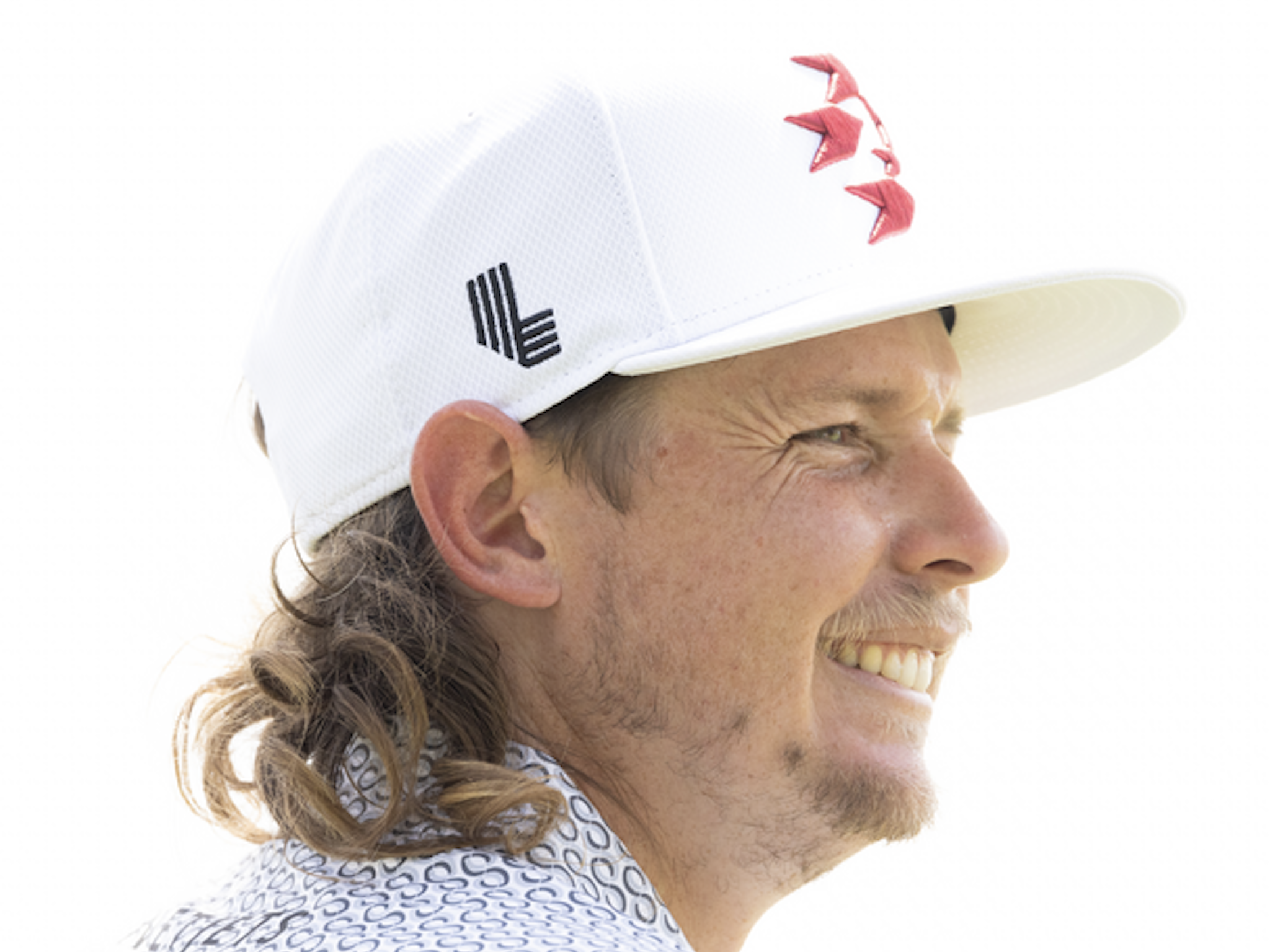
LIV Golf is set to begin its fourth event of the season at Hong Kong Golf Club in Hong Kong, China. This marks the first time that LIV Golf will travel to China for an event.
Hong Kong Golf Club is a par 70 measuring 6,710 yards. LIV will be using the “Fanling Course” for the event.
While speaking with Asian Tour player Travis Smyth, he gave me a rundown on what it takes to be successful at Hong Kong Golf Club.
“Hong Kong golf club, it’s pretty old school, like super short and tight. And I, I don’t think it falls into like a bomber’s hand. I think you’ll see a lot of guys hitting it to roughly the same spots on the majority of the holes. There’s a few holes where Bryson will be able to unleash a few but not many. When I played here, I hit Hybrid on Par 4’s off the tee maybe like seven times.”
Travis also said that the tight fairways and penal potential misses will keep the bombers at bay.
“It’s just that sort of course you’re hitting it like anywhere from 220 to 240 off the tee. And then from there you have a range of holes where it’s like kind of some sort of wedge or nine. It’s not very long.”
Around the green game will also be tremendously important at Hong Kong Golf Club.
“The greens are small as well and it’s usually quite hard to get up and down if you miss the greens. Someone like Cameron Smith I could see doing really well there. He played well in the international series. but just someone that’s, you know, pretty dolled in with their, their scoring clubs, he’s probably going to do well there.”
Players dialed in with their game from tee to green with control over the golf ball should fare extremely well.
“You can’t really scramble from the trees either. So, you really just have to. I’d, yeah, just whoever’s the best ball striker that week, you can’t really strap it around and fake it around there. You got to hit it straight. The tree lines are dead, there’s some hazards and stuff. It’s a short, tight quirky course, not what any of these guys are probably used to.”
Despite it being short, don’t be surprised if it gives players some real trouble.
“It should be fun viewing because there’ll be a lot of opportunities. They’ll feel like they can go low around there because it’s short but, you know, you make a few bogeys, and you get quite frustrated, and you start pushing off the tee and find some trouble and stuff. It can eat you up as well.”
Smyth finished 2nd at Hong Kong Golf Club to qualify for the 2023 Open Championship at Royal Liverpool.
Past Winners at Hong Kong Golf Club
- 2023: Ben Campbell (-19)
- 2022: Wade Ormsby (-17)
- 2018: Aaron Rai (-17)
- 2017: Wade Ormsby (-11)
- 2016: Sam Brazel (-13)
- 2015: Justin Rose (-19)
- 2014: Scott Hend (-13)
- 2013: Miguel Angel Jiminez (-12)
The top of the board once again will be a major threat this week. Jon Rahm is still in search of his first win on LIV and has been knocking at the door in each of his first three starts. Brooks Koepka hasn’t yet contended but is playing steady golf and has yet to shoot a round outside of the 60’s this season. Joaquin Niemann is the hottest player on the planet and has shown no signs of slowing down.
However, on a golf course that can neutralize the big hitters, this is an event that seems a bit more up for grabs than we’ve seen in the first three LIV events.
LIV Golf Stats YTD
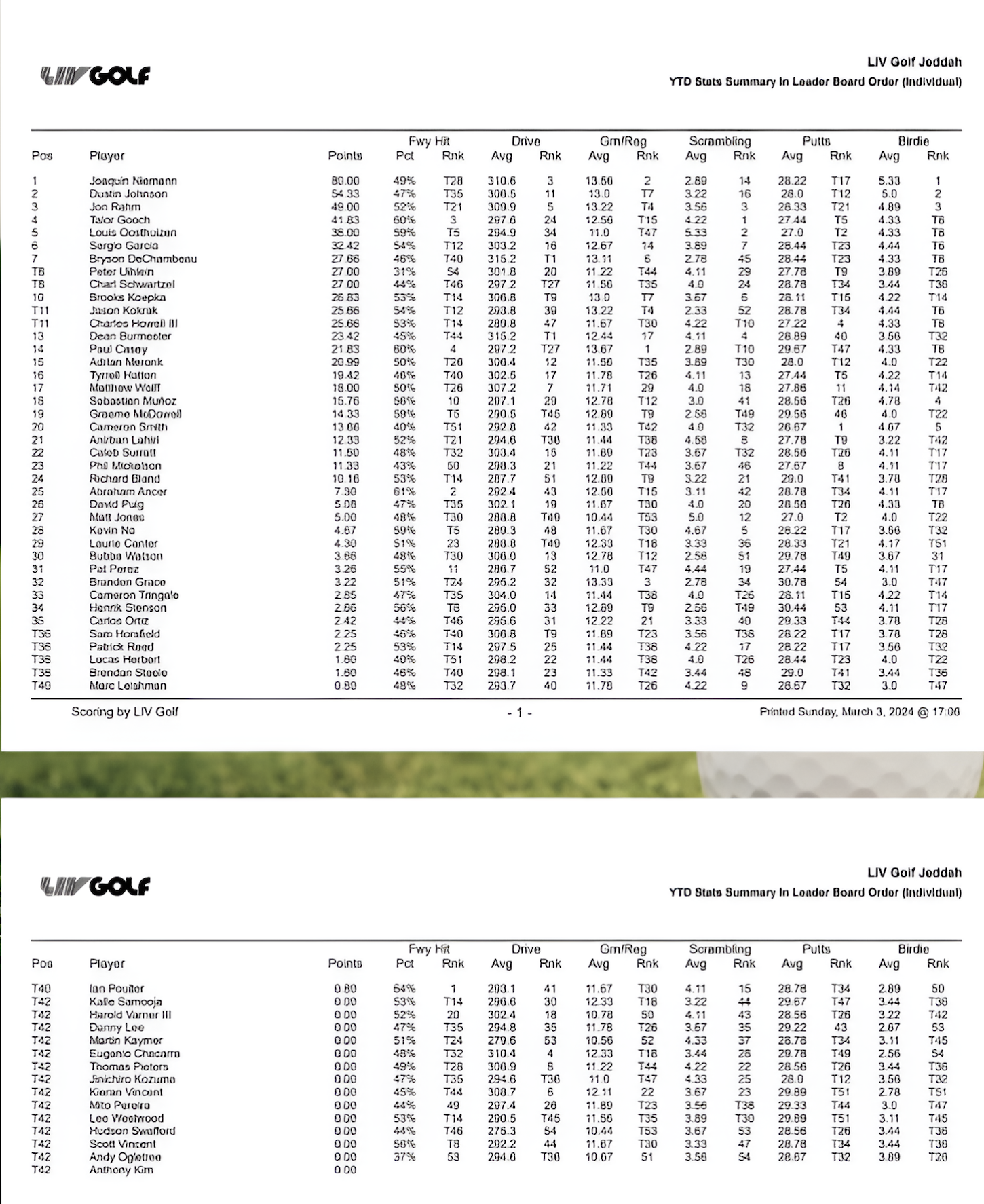
2024 LIV Hong Kong Picks
Cameron Smith +2000 (Bet365, BetRivers)
It’s been a slow start for Cam Smith this season. In his three starts on LIV, he’s finished T8, T15, T41 and has yet to look like the Cam that is one of the best players in the world. Hong Kong Golf Club should be the perfect course fit to get the former Open Champion out of his slump.
Hong Kong Golf Club is tight off the tee, and many players won’t be able to hit driver. That will neutralize some of the best drivers of the golf ball in the field and propel players like Cam, who are almost unbeatable from fairway to green. Cam’s driver has been a weakness throughout his career, and it’s been especially pronounced this season. He’s tied for 51st in fairways hit thus far on the season. Taking driver out of his hand this week could be exactly what he needs to get on track.
Despite the poor tee balls, Smith still ranks 1st in putting and 5th in birdies made. He’s also a great scrambler, and with small greens at the course, having to get up and down is inevitable. If he can play from the fairway this week, he should have a major advantage in the other facets of the game.
Louis Oosthuizen +2000 (DraftKings)
Louis Oosthuizen should be an absolutely perfect fit for Hong Kong Golf Club. The South African has been remarkably consistent over the past few months dating back to the fall, where he won two consecutive DP World Tour events and also finished 2nd at the International Series Oman. In his three LIV starts this year, Louis has finished T8 at LIV Mayakoba, 50th at LIV Las Vegas and T2 at LIV Jeddah.
Louis is relatively short off the tee and that won’t hurt him this week. He is one of the best putters and scrambler on LIV, and his silky-smooth swing looks as dialed in as ever at the moment. He’s yet to win a LIV event, but a victory for Louis seems imminent.
Patrick Reed +5000 (FanDuel)
Patrick Reed is another play who’s yet to win a LIV event but has been a winner throughout his entire career. The former Masters champion should love Hong Kong Golf Club as it will play to his strengths on and around the greens.
Reed played on the Asian Tour this fall and finished T15 at the Hong Kong Open and T7 at the Indonesian Masters. The experience in Asia this season should be a benefit for Reed acclimating to the travel and conditions this week.
The 34-year-old should benefit from taking driver out of his hand and similar to Smith, can beat anyone in the world if the tournament become a short game competition.
*Featured Image and Stats Image courtesy of LIV Golf*
- LIKE12
- LEGIT8
- WOW4
- LOL0
- IDHT0
- FLOP1
- OB1
- SHANK7
-
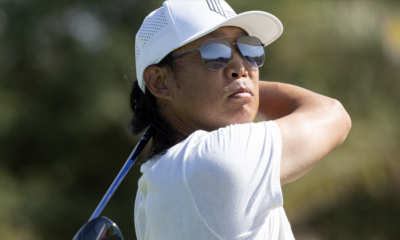
 19th Hole3 weeks ago
19th Hole3 weeks agoTour pro calls Anthony Kim a ‘f*****g idiot’ following Instagram comeback post
-
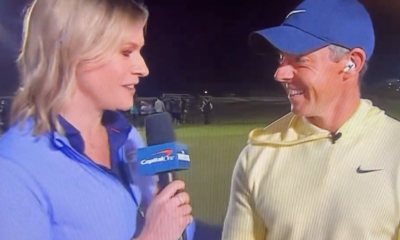
 19th Hole3 weeks ago
19th Hole3 weeks agoThis Rory McIlroy post-round ‘The Match’ moment is going viral…but all is likely not what it seems
-

 Whats in the Bag3 weeks ago
Whats in the Bag3 weeks agoAnthony Kim WITB 2024 (February)
-
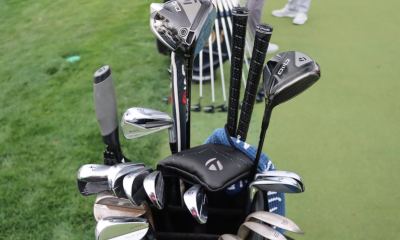
 Whats in the Bag2 weeks ago
Whats in the Bag2 weeks agoScottie Scheffler WITB 2024 (March)
-
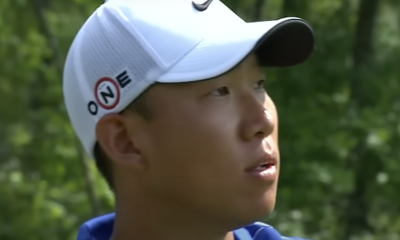
 19th Hole3 weeks ago
19th Hole3 weeks agoAnthony Kim’s speculated LIV Golf sign-on fee may surprise you
-
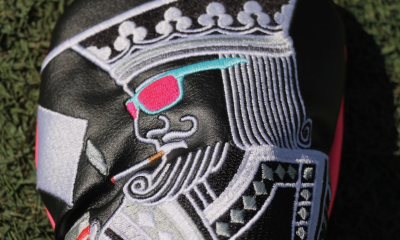
 Tour Photo Galleries2 weeks ago
Tour Photo Galleries2 weeks agoPhotos from the 2024 Arnold Palmer Invitational
-
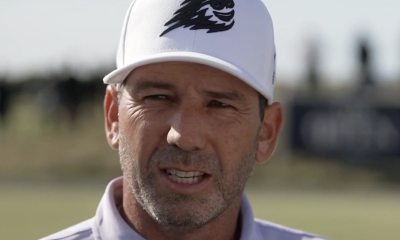
 19th Hole2 weeks ago
19th Hole2 weeks agoThe total sum that Sergio Garcia needs to pay in fines if he wants to return to DP World Tour revealed
-
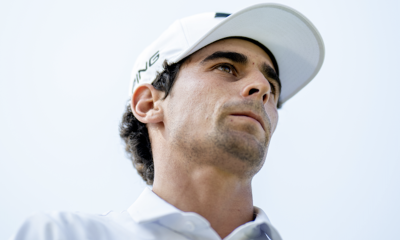
 19th Hole2 weeks ago
19th Hole2 weeks agoJoaquin Niemann names 3 PGA Tour events he’d love to play each year ‘in a perfect world’


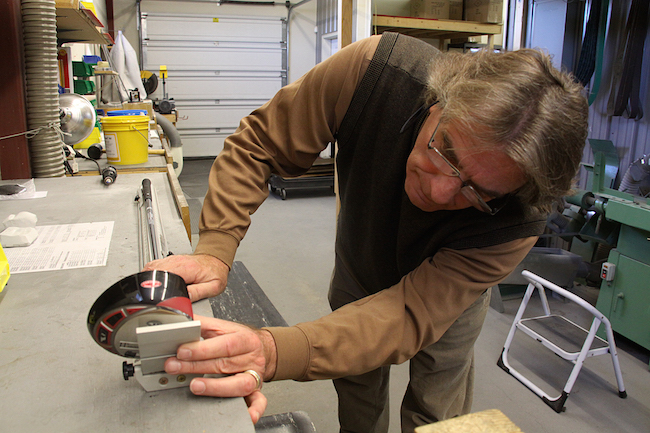



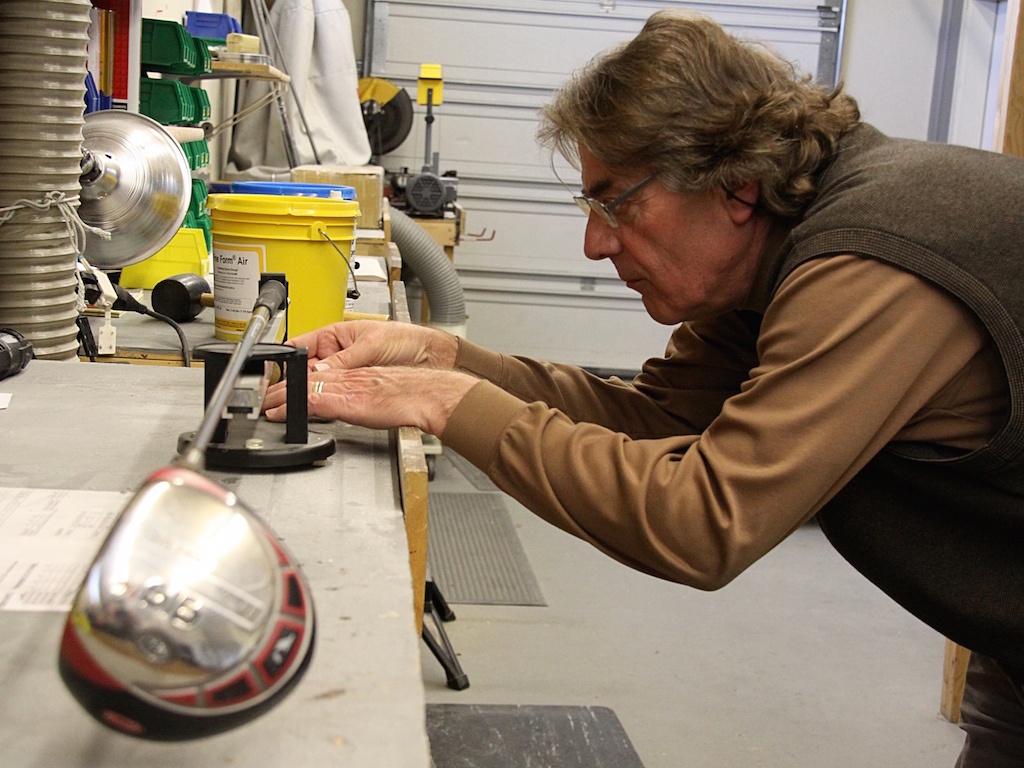


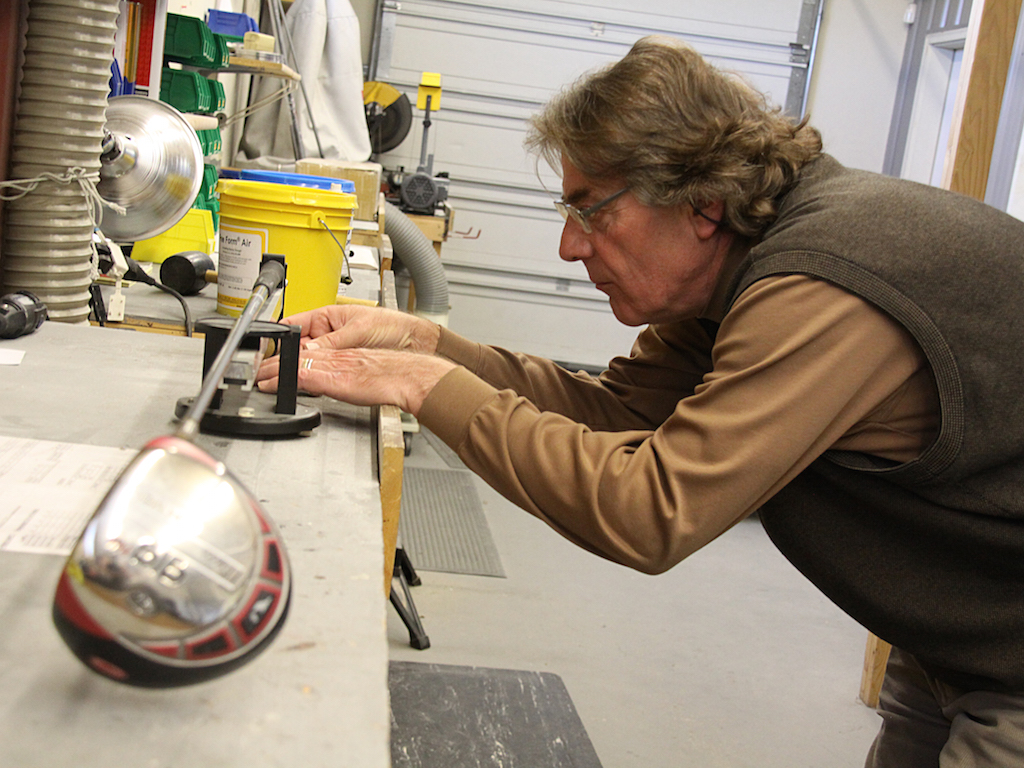
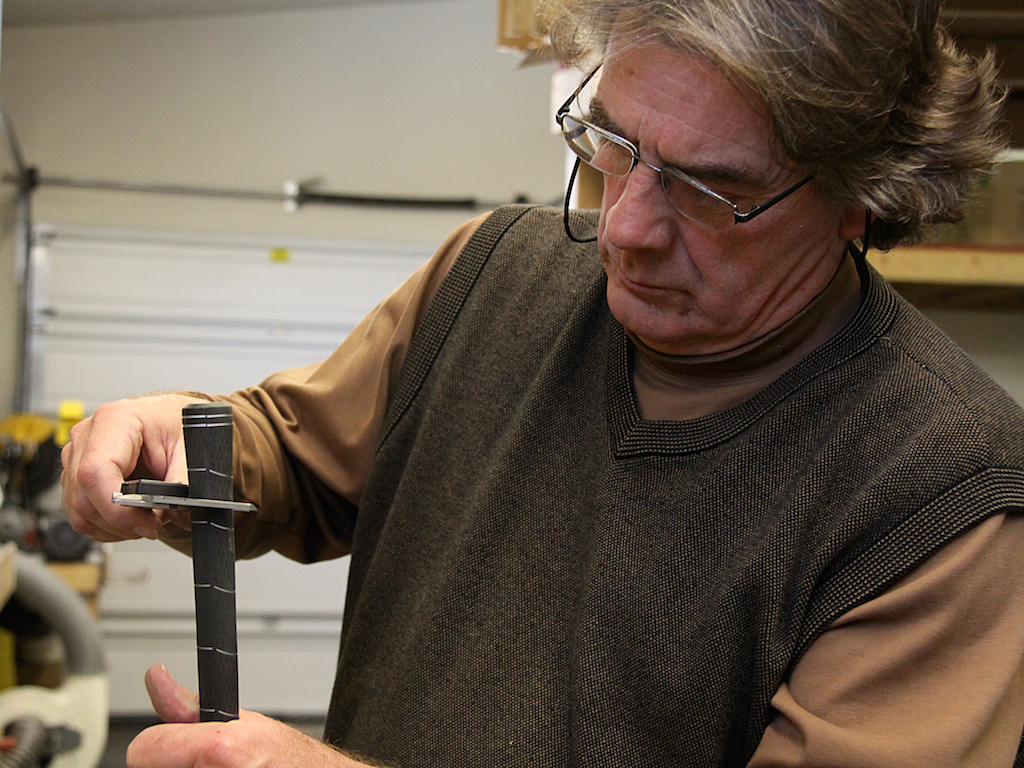
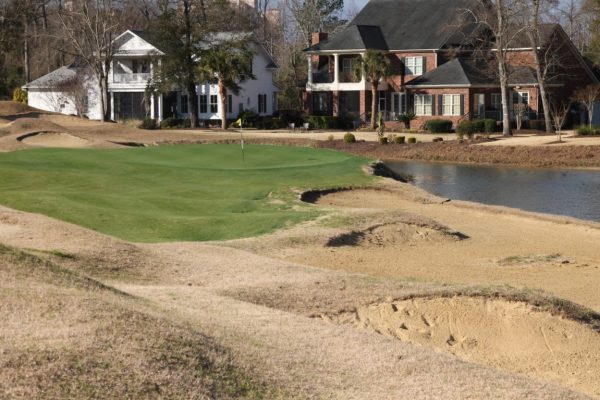
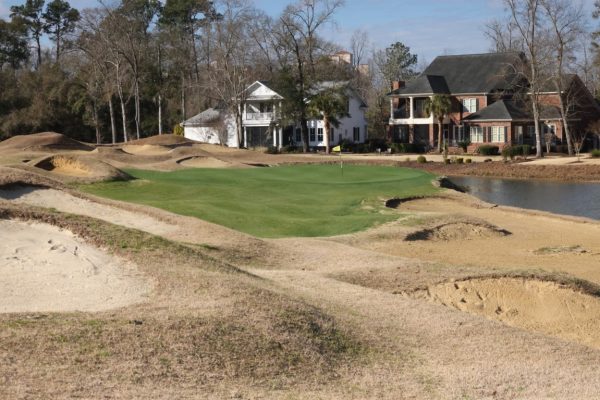

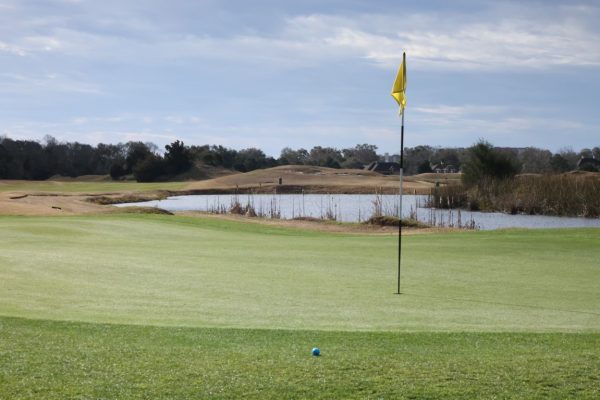


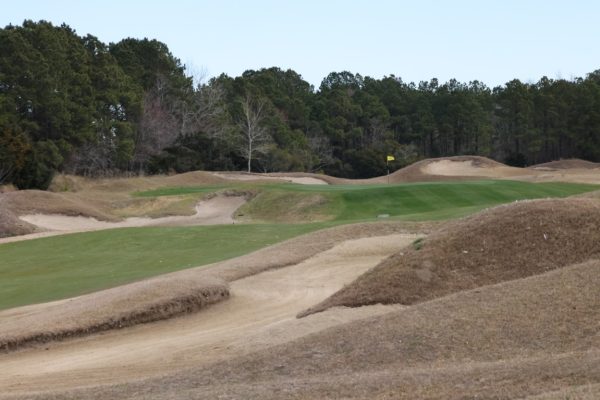
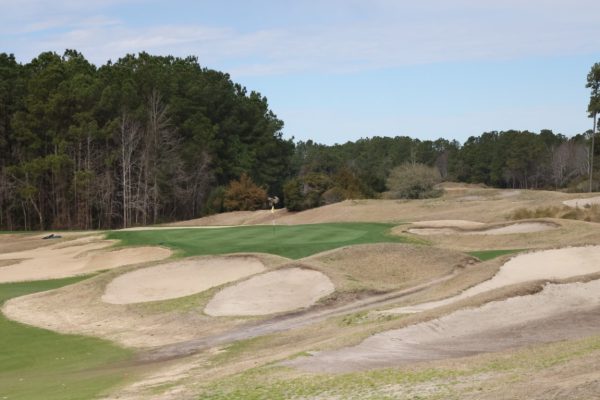
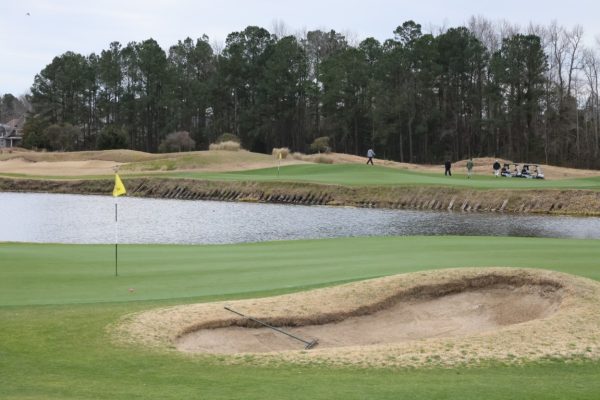

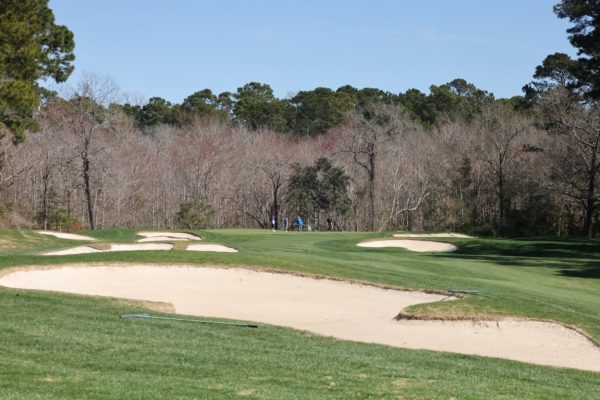





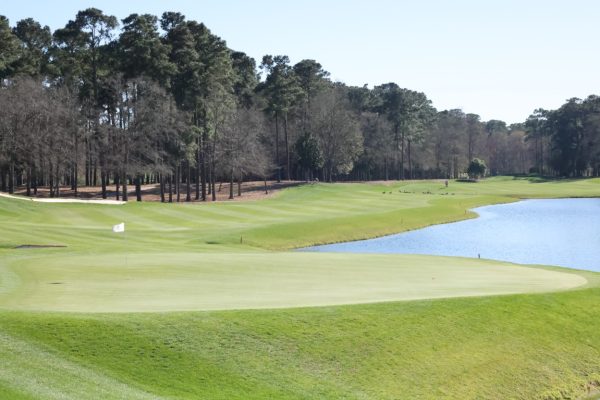
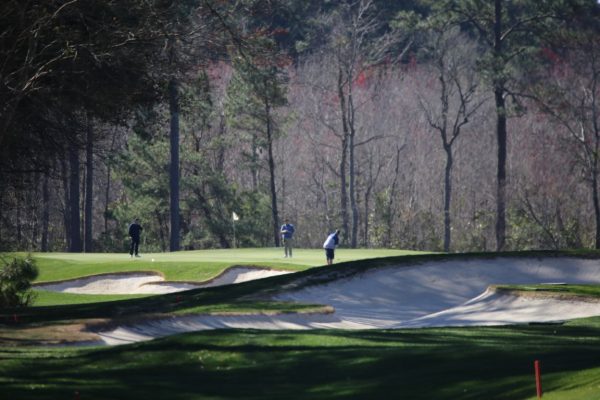





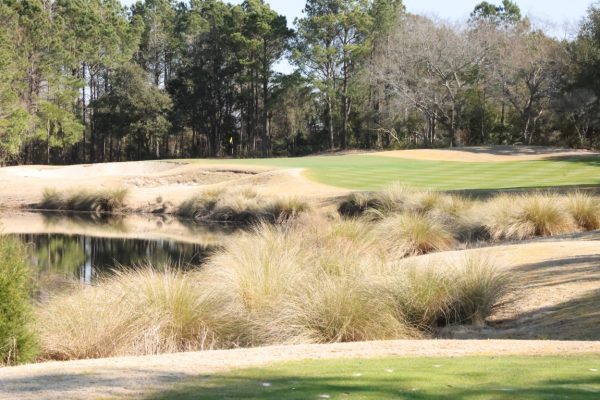







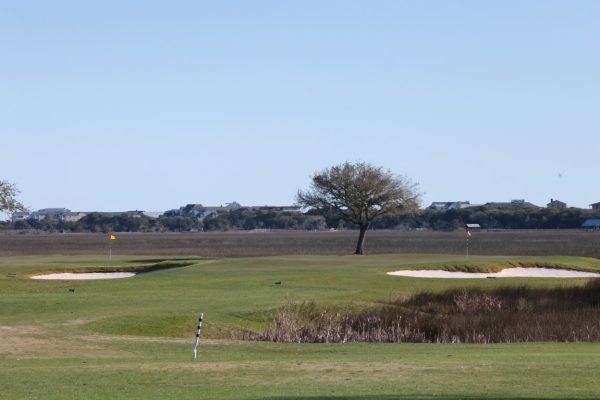


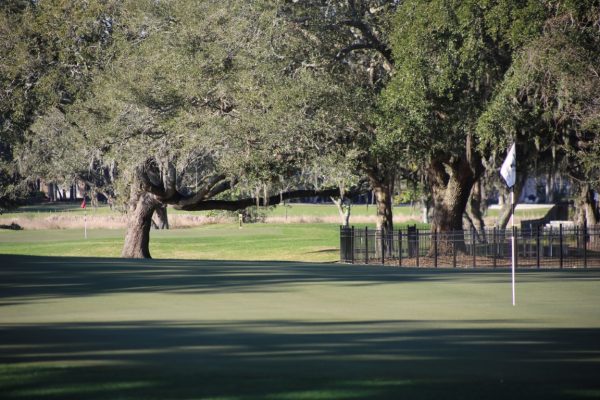
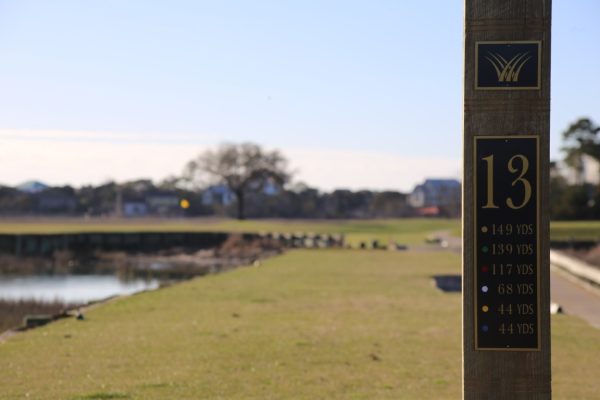

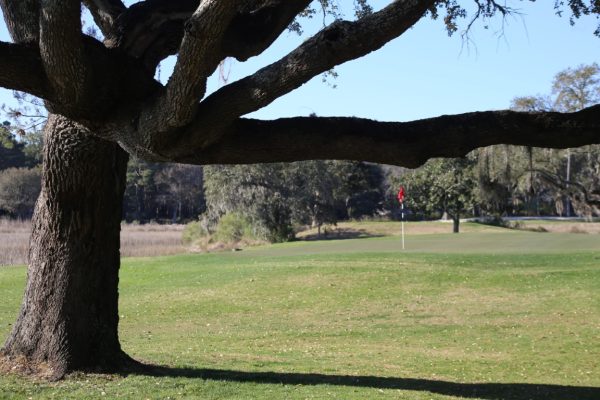
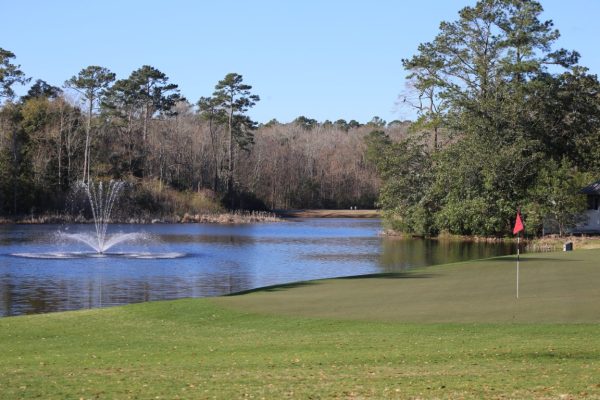







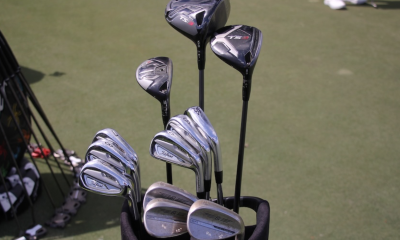

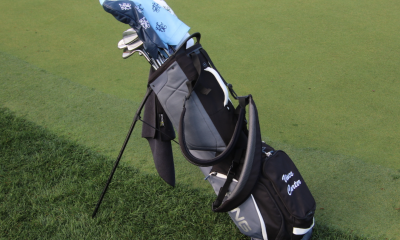

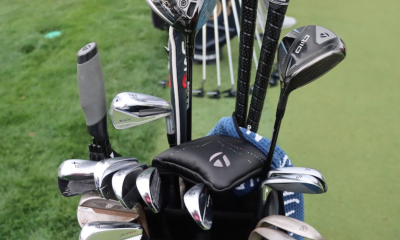

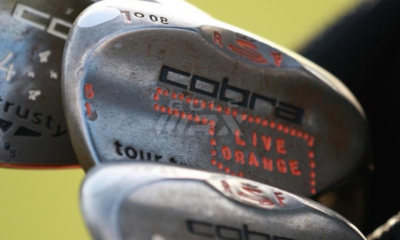

Pingback: Does Club Catcher affect your swing?
Pingback: Best 8 golf swing weight chart - lindaadvisors.com
Pingback: Do Golf Gloves Help? Our Expert Opinion - Top Rank Golf
Grace
Aug 16, 2020 at 10:21 am
I have Rogue x irons and I had the swing weight checked and every club has a different swing weight. I purchased these crabs new. Is that correct?
Or should they be the same?
greg
Jul 14, 2016 at 3:25 am
great article, Mr. wishon. what is your take on bridging the gap between shaft weights throughout the set. for example most people have a 55 -65 g weight shaft in their drivers and around 100-110g shafts in irons.would golfers in general see an improvement in consistency if there was a smaller difference in shaft weight throughout the set. Sergio Garcia plays a 100+ g shaft in his driver and his irons are in 120g shafts. would I benefit if I went from my 120g iron shafts to 90g shafts so that its not way too different in weight in comparison to my 70g driver shaft ?
Joe
Jun 11, 2016 at 4:53 pm
Tom, Great article. I grew up with traditional loft and lie theories that have been blown out of the water and proportion for that matter. I recently had a set of mp 64’s built with KBS tour S. 2degrees flat. Played well with them but they always seemed a little long at STD length as I am only 5-7″. I found myself choking up on most all the irons, including the PW, so I had them cut from the butt end 1/2inch. Love the way they feel as I always wanted a little lighter club, similar to the Cobra cavity backs I played years ago with graphite shafts, but know that I lost significant swing weight. ( most likely D3 to C8 or C9. ) Played a few rounds and love the overall weight but am probably getting a little quick. Is lead tape the answer?
Devon
Mar 18, 2015 at 12:03 am
Hi Tom:
I recently bought a set of Cobra amp cell pro muscle back irons. The clubs are factory swing weight D3 3-9. I am a tall guy (6’5″) with pretty fast club head speed, 115+ for driver, and 4 handicap. I have the DG X100s in the irons, and they are 1/2″ extended. I also have big hands, and have the Lamkin Oversize R.E.L. 3GEN ACE grips, which weigh 78 grams, as opposed to the factory New Decade MC weighing 46.5 g. By referencing another thread on this site (see below), I figure the longer, heavier shafts and heavier grips mean my clubs are 9 SW points lighter than factory, or about a C4. I also see that better players with faster swings might want a heavier swing weight, which means my ideal may be heavier than D3. That same thread suggests I need 2 grams of club head weight for 1 SW point. The way I read this, I need to add at least 18 grams to club head to get back to D3, and more if I want heavier than D3. That seems like a lot of lead tape. Two questions: 1) am I right in my calculation that I would need to add 18 grams to get back to D3 and more for higher than D3; and 2) if I am correct, is it wise to get 18+ grams in the head by adding lead tape, or is there a better way?
Thanks so much for sharing your knowledge. Super helpful.
http://www.golfwrx.com/forums/topic/44071-swing-weight-factors-in-relation-to-parts/
Tom Wishon
Mar 18, 2015 at 10:23 am
Devon:
Once a golfer begins to use very heavy grips or a substantial counterweight in the butt end of the shaft, you pretty much have to throw swingweight measurements out the window and rely strictly on experimenting with the headweight until you reach a point that the head does not feel too light or too heavy during the swing. And once that point is found, then for future reference you can take a swt measurement. But that swt measurement will only be pertinent for your specific combination of length + shaft weight + grip weight.
When you use a very heavy grip, more times than not if you keep adding weight to the head to get the swingweight back up to what it was with a normal weight grip, the head weight feel will be too heavy. Hence the reason you have to go with a trial and experimentation process to add weight to the head until you get to a point the head weight feel is not too light or too heavy and not really aim at a specific swingweight measurement.
This by the way, is one of the ways that MOI Matching of clubs can be better than using swingweight . With a very heavy grip, the MOI is not affected all that much because the increase in grip weight is at a point on the club closest to the MOI’s axis of rotation for its measurement. The idea would be to install the heavy grip, then start experimenting with adding weight to the head to set the MOI at the level it was in the clubs before the heavy grip installation. And in this case, you would not be adding all that much weight to the head to get to that same MOI level as before.
Devon
Mar 18, 2015 at 9:52 pm
Tom, thank you so much for responding. I would not have guessed that getting a lot heavier in butt end wouldn’t necessarily mean you have to add a ton of weight to the club head. I will say that, having yet to experiment with adding weight, my clubs actually feel pretty good without any added weight on club head, which would confirm what you are saying in your reply. I’m glad I asked, because I was envisioning this hideous glob of lead tape pasted all over the back of my beautiful new blades, and a 7 iron that weighed as much as a brick, and I was thinking that can’t be right. I’m super excited to go experiment now. Who knows, maybe I’ll even end up with an MOI matched set….:)
Thanks again.
sam
Mar 6, 2015 at 8:26 pm
hey Tom, again a great article.
whats you thoughts on counterbalancing?
i have a tank cruiser putter and find the counter weight is great for my stroke so how about the rest of the set?
is it true with the weight more in the butt end it can help with swing plane? (slight over the top issues) “dropping” it inside a bit more and helping with a smoother transition?
is it worth putting a weight in the butt of the driver for a trial?
love to hear you thoughts and if you use this method yourself in certain builds?
Thanks Tom keep up the great work!!
Tom Wishon
Mar 16, 2015 at 10:33 am
SAM
Absolutely we and many clubfitters see a very high percentage of golfers improve with the PUTTER when using a heavier counterweight in the butt end of the shaft, one that is most typically 80g to 100g. The effect is to put more weight in the hands to calm down the stroke action more to result in better distance control, a reduction in push/pull tendency and more on center hits for better overall putting consistency. No question about this.
But with regard to use in full swing clubs, here is really is a trial and experimentation, hit or miss thing. No question some golfers have improved their clubhead speed and release with counterweights in the realm of 20 to 40g in the butt end of their full swing clubs. But we cannot really find a common thread in terms of what swing types are more prone to improvement with a counterweight in the full swing clubs. We’ve seen smooth swingers, slower speed players, aggressive swingers, higher speed players both improve and not improve with a counterweight.
So for now, until we or someone else finds that common thread to better pinpoint who will and won;t improve from a counterweight in the full swing clubs, it is a matter of try it and see what happens but don’t get bummed if nothing happens.
tlmck
Mar 6, 2015 at 5:46 am
Due to physical ailments, I have recently switched to ultralite graphite shafts in all my clubs with a heavier swingweight and am loving it. I take the club back slow with a slight pause at the top, and then just let gravity do the rest. Just effortless, pain free power. Even accounting for the stronger lofts on the new clubs, I have still picked up an honest 4 yards carry with the irons, and about 8 with the driver. My accuracy has not suffered either. I had actually tried swingweights down in the mid C range at first, but that seemed to required more effort to keep on target.
Tom Wishon
Mar 6, 2015 at 10:15 am
TIMCK
Absolutely a perfect example of how finding the right head feel does contribute to better swing timing and from it, the ability to maximize clubhead speed potential and shot consistency !! That’s precisely the value of working to find the best combination of total weight + headweight feel. Good for you that you went on this “search” and found YOUR best weight distribution in your clubs!
Joe Golfer
Mar 6, 2015 at 2:17 am
@Tom Wishon. I would love to see an article giving suggestions on what shaft profile is best for which type of golfer.
Nowadays we often hear about butt stiffness, middle of shaft stiffness, and tip stiffness (yes, I realize it can get much more complicated than just measuring at three areas, but I mention these three simply because shaft manufacturers often describe shafts in this manner rather that listing points all along the shaft).
I think most of us know that a stiff tip shaft will give a lower ball flight and is generally for the faster swinging player who does not need help getting the ball into the air.
I was wondering if you could offer some thoughts on the other two areas, the butt and middle profiles. For example, would a slower tempo player who still has decent swing speed like a soft butt, medium butt, or stiffer butt profile. Likewise for the mid point profile of the shaft.
Some discussion on fast tempo players vs slower tempo players on these two aspects (butt and mid stiffness) of shaft profile would be quite interesting. Or are these areas simply personal preference, trial and error?
I realize that not everybody fits into the same boat, and that there are exceptions to every rule, but it would still be interesting to hear your well-informed opinion on such matters as far as what the findings are in general for the majority of golfers.
Always appreciate your articles.
Tom Wishon
Mar 6, 2015 at 10:19 am
JoeG
The next article in this series is about fitting for flex and bend profile of the shaft. But since these articles have to be short, I won’t be able to cover as much as I did a bit back when I did a three part article all about shafts and shaft fitting and golfer swing characteristics to shaft design spec relationships. Go here – http://www.golfwrx.com/author/tomwishon/ Scroll way down and you will see Part 1, 2, and 3 of this series of shaft articles. The info there will answer all your questions.
Thanks for your interest for sure.
theo
Mar 5, 2015 at 10:12 pm
The “don’t get trapped” sidebar is a great read. I’ve been in this ‘ether of confusion’ much of my golf life and this paragraph provides some clarity. I used to wear the “I’m a D3 guy” badge thought about having it tattoo’ed on my arm. But then I’d feel someone else “heavy” irons and change my allegiance on the spot. And when I trie to replicate the swingweight mine felt “different”. And on and on. This is a good explanation. I wish someone would come up with a new standard besides swingweight because it’s caused me much grief. Thanks Thomas.
Tom Wishon
Mar 6, 2015 at 10:30 am
Theo
Well there is for sure another way although as yet I won’t call it a “standard” – but it sure would be a much better way for golfers to empirically know how to always end up with the same swing feel when they switch specs like length, shaft weight, grip weight, head weight. It’s in the other brief sidebar about MOI MATCHING as an alternative to swingweight matching of clubs. There’s a link in that sidebar to an article we put together to explain MOI matching, what it is, how it works, why it is potentially a better way to reference swing feel in clubs than swingweight. There are a number of more technically aware clubfitters who have been making all clubs they fit and build to be MOI matched for several years now.
Few have heard of it unless they hound this forum a lot – there have been a number of threads on WRX’s clubtech forum about MOI Matching. Few have heard of it as well because the OEMS don’t do it. Many think if the big companies don’t embrace something then it can’t be any good. There are several reasons they haven’t even though I can assure you they know of it and a couple have even commissioned a serious “look see” into it.
First, all the OEMs make their clubs to a series of standard specs so their clubs can be shipped to all the retail golf outlets to be sold off the rack. They do this because this is the only way to sell the highest volume of clubs. Hence all the clubs sold off the rack can only be made to one swingweight as a std spec. MOI matching has no advantage if you just pick one MOI and make all your clubs to that single MOI measurement. It has to be fit to each golfer just like swingweight should – based on the golfer’s strength + swing force + sense of feel for their swing timing and rhythm. So for an OEM to go with MOI matching, it would not do anything better for them since they have to make their clubs to one series of std specs.
Second reason the OEMs won’t do MOI matching is because it would take a HUGE educational effort on their part to convince the millions of golfers who are so used to swingweight matched clubs that it is better. It would only take ten golfers putting their MOI matched clubs on a swingweight scale and wondering negatively why all the clubs are different swingweights before an OEM would toss in the towel and go back to swingweight.
Thanks for your interest !
Hippocamp
Mar 5, 2015 at 1:36 pm
Thanks for a great article, Tom.
Any advice on how to deal with these new shafts with super high balance point? Just swapped a stock 65g 3W shaft for an Aldila Tour Blue 85g shaft with the idea of shortening the club by 1/2″ or so. Initially cut the Tour Blue to stock 43″ and was puzzled that the club actually had a lower SW with the shaft that weighed 20g more – at exactly the same length. Then it became clear that most of that extra weight was near the butt in the Tour Blue.
Anyway, made it clear that the distribution of weight in the shaft is more important than total weight for determining the SW of the club.
Curt
Mar 5, 2015 at 12:58 pm
Takes some cajones to call out one of the best in the Biz………
ken
Mar 5, 2015 at 12:40 pm
I don’t know a darned thing about swing weight. Nor do I care to know.
When I pick up the club at the gold shop and awing it few times, I immediately know whether I like the feel and weight of the club or not….
IN fact I would tell the club fitter “don’t bother telling me the swing weight. You’ll just confuse me.”
Jeff Borders
Mar 5, 2015 at 12:32 pm
But aren’t most club heads around 200-205g? I think the shaft weight is a lot more variable with today’s raw head weight. I could go with a shaft in the 50 gram range all the way up to 80+ grams.
Marni Ines
Mar 5, 2015 at 11:38 am
Have to disagree with the comment that shaft weight is, by far, the largest contributor to the total weight of the club, because, it is not. The head is BY FAR, the largest contributor to the total weight of the club.
Tom Wishon
Mar 5, 2015 at 1:00 pm
Marni
Let me explain why the shaft weight most definitely IS the biggest contributor to the total weight. Let’s talk driver just for sake of the explanation but it is true for all other clubs as well. Graphite shafts can be found for drivers that weigh as little as 39g up to 90g. We won’t include steel here because far less than 1% of all golfers play with steel shafts in the driver today. So that is a 51g range in the shaft weight.
The vast majority of grips for men exist between mid 40s and mid 50s in gram weight. Sure there are some exceptions to this but they are very seldom used for the vast majority of golfers. So grip weight exists in only a 10g or so high to low range.
The headweight is what is used to control the final swingweight of the club. Let’s say you build two drivers, one with a 39g shaft and one with a 90g shaft. To achieve a D1 swingweight for example at a length of 44″ with a normal 50g grip, with the 39g shaft the head has to weigh 213g and that club has a total weight of 302g. To achieve a D1 swingweight at 44″ with the same 50g grip with the 90g shaft, the head has to weigh 200g which brings this club to a total weight of 340g.
So for a 51g range in shaft weight, the head weight only ranges by 13g to achieve the same swingweight at the same length with the same grip. But the total weight is different by 38g, which is far more than the head weight range.
Hence shaft weight is the major determinant of the total weight of any club. Thanks for asking about this so I could have the chance to explain this more clearly.
NaborsX
Mar 6, 2015 at 12:49 pm
Fantastic info. Really appreciate you sharing the knowledge!
John P
Mar 6, 2015 at 4:51 pm
As a swinger of a set 770 CFE’s I love my Wishons. However, I think head weight is the largest contributed to TOTAL weight of a club. In the example the heads are 70.5 and 58.8 percent of the TOTAL club weight. Maybe the shaft is a big contributor to SWING WEIGHT because the weight difference is distributed along the length of the club. Love these articles, keep them coming!
PJM
Mar 8, 2015 at 5:18 am
Hi Tom. Thanks for the article and the explanation. I think your comment that the shaft is the major determinant of the total weight is clearer than your earlier comment that the shaft is the biggest contributor to the total weight. I agree with Marni’s interpretation that the heaviest component (i.e., the club head) is the biggest contributor to the total weight, but understand that you are saying that there is much greater variation in the weight of the shaft than other components. Thanks again for sharing your knowledge and experience.